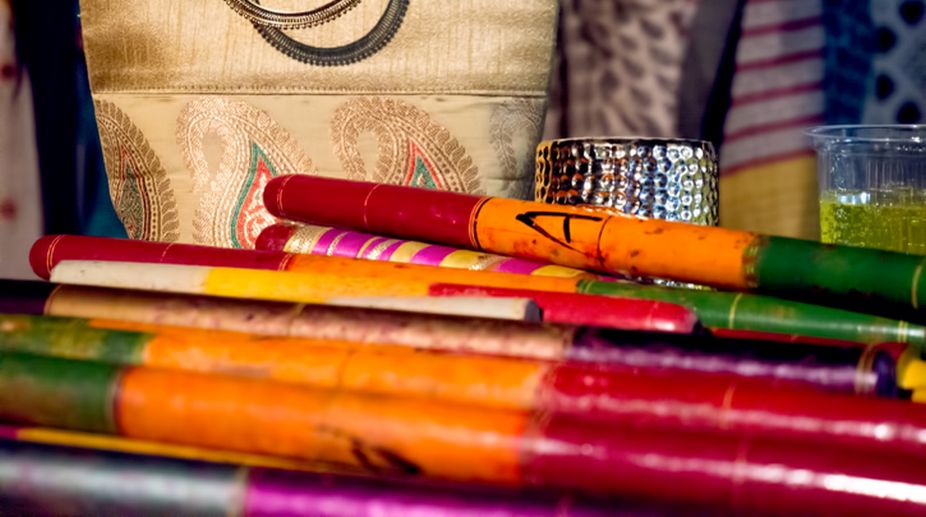Festivals embodying the essence of Goan traditions
As the colours of Shigmo paint the streets with exuberance, various other festivals prepare to showcase their diverse cultural heritage through a series of unique festivals.
The Navratas seem to have acquired more zealous participation in recent years, especially in the post-Partition colonies.

(Getty Images)
When Taimur the Lame invaded Delhi in September 1398, it was time for the Navratras preceding Dussehra. How these were affected is not known, but presumably restraint was observed. In those days the Kalkaji mandir and the one at the other end of the city ~ Jhandewalan ~ were among the two highly venerated centres.
While the Kalkaji mandir’s history goes back to dim antiquity, Jhandewalan is said to have come into prominence during the reign of Prithviraj Chauhan in the last quarter of the 12th century. His daughter Bela is believed to have built a temple in this area. Taimur arrived 200 years later.
Nadir Shah’s invasion took place on 9 March, 1739, 341 years after that of Taimur’s.
Advertisement
The Vasanthik Navratras were due to be held. Mohammad Shah Rangila, the Mughal emperor, was quite secular in his approach and celebrated festivals like Basant, Holi and Diwali. Bahadur Shah Zafar, who came to the throne about 100 years after Nadir Shah’s invasion, was fond of eating the dal and rassa (with puris) sent by the seths of Chandni Chowk during the Navratras, also known as Navratri. The change in nomenclature is of recent origin.
Historical evidence of Mughal participation (besides the stories of Akbar and his Rajput queens) in Delhi dates back to the time of Shah Alam, who helped in the reconstruction of the Kalkaji temple ~ the biggest venue then for the two Navratris. Akbar Shah II continued his patronage and so did his son, Bahadur Shah Zafar. After that it was British Raj.
at it was British Raj. The Navratras seem to have acquired more zealous participation in recent years, especially in the post-Partition colonies. Earlier, people used to make their devotions at the ancient temples, but now because of the population explosion they prefer to worship in their own localities and feed not only the devotees but also passersby in accordance with Puranic traditions.
At the bhandaras, which are actually community feeding occasions, the piety, zeal and devotion of those preparing the langar makes the food taste better ~ or so it seems. Surprisingly enough, rarely are any cases of food poisoning reported.
The Chhattarpur mela, held during the Navratras in Delhi, is famous for its langar and people stand in long queues to taste the food distributed free to all. The temple at Chhattarpur now boasts of a golden idol of the Devi. But there is another temple, a little distance away, which is much older and, according to some, marks the site of the mandir that existed in the pre-Sultanate days.
The Kalkaji mandir, near Okhla station, is believed to have been built in pre-historic times, though the oldest portions of the present building were constructed between 1764 and 1771. Besides the Navratra mahotsava, a fair is held there every Tuesday in honour of the goddess Kali.
In Jhandewalan, there are many temples, including an ancient one of the Devi, which draws big crowds during the Navratras. One afternoon 60,000 people came for darshan, of whom 18,000 ate at the bhandara.
Hanuman Mandir, near Connaught Place, also draws big crowds on Tuesdays and Saturdays, more so during the Navratras. Navratra days are a godsend for halwais, fruitsellers and grocers. Rock salt, commonly known as Lahori Namak, is in great demand. The paradox is that it mostly comes from Pakistan, where Navartras are not observed.
In Subhash Nagar, the Arya Samaj mandir is the focus of attention as much as the Santoshi Mata temple in Harinagar, which, though not very old, was built by Shamsher Bahadur Saxena after the Devi appeared to him in a dream. First started in a little room (kothari), it is now a huge building with queues sometimes more than a mile long.
In Chandni Chowk are some of the finest temples in the Capital, including the Gauri Shankar mandir and Dauji-ka-mandir, which also draw huge crowds. Daujika-mandir is a nondescript building, which looks like an ordinary house from outside. But it’s the interior that holds all the attraction. Situated in Esplanade Road, it is the focal point, for most Hindu religious processions as they start and end at it. But not during the Navratras. After they are over, the temple sees hectic activity for Dussehra as the Ram Barat is taken out from it.
Chariots with white horses that carry Lord Rama, his brother Lakshman, Sita and Hanuman, are the main attraction, but the one carrying Ravana, his son Meghnaad and brother Kumbhkaran is booed by the onlookers. The last of the processions after Vijaydashmi is the chariot carrying Bharat for the observance of Bharat Milap (between him and Rama). After that the temple is decorated and illuminated for Diwali with coloured lights that lend lustre to the whole Chandni Chowk area.
Advertisement